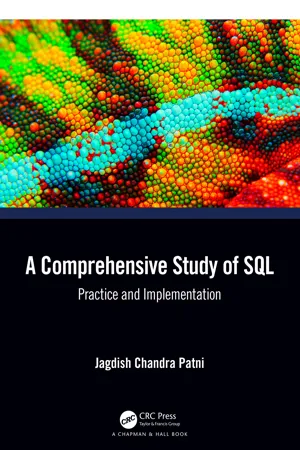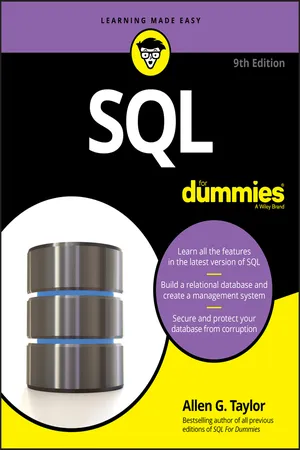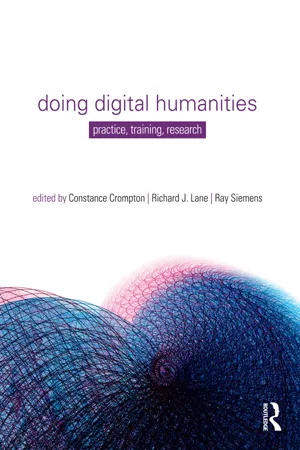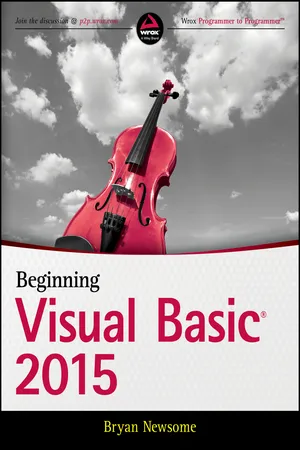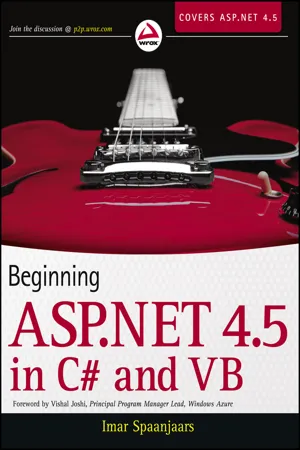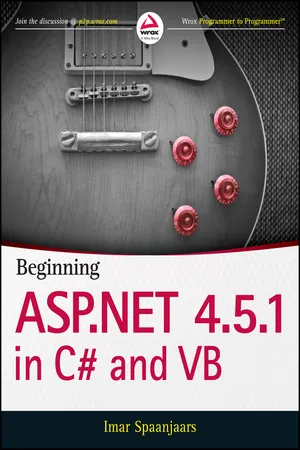Computer Science
SQL Database
An SQL database is a type of database that uses Structured Query Language (SQL) to manage and manipulate data. It provides a structured way to store, retrieve, and manage data in a relational database management system (RDBMS). SQL databases are widely used in computer science for organizing and accessing large volumes of data efficiently.
Written by Perlego with AI-assistance
Related key terms
11 Key excerpts on "SQL Database"
- eBook - ePub
A Comprehensive Study of SQL
Practice and Implementation
- Jagdish Chandra Patni(Author)
- 2022(Publication Date)
- CRC Press(Publisher)
1 Database SystemsDOI: 10.1201/9781003324690-1A database is a well-defined collection of structured information, or data, which is typically stored digitally in a computer system. The control unit that usually controls the database is known as the database management system (DBMS). The data and the DBMS, along with the applications that are related to them, are referred to as a database system, often abbreviated as just a database. The database is a collection of interrelated data that is used to effortlessly retrieve, manipulate, insert and delete the data. It is also used to organize the data in the form of a table including rows and columns, schema, views, reports, etc.The most common type of data within various databases in operation today is typically patterned in rows and columns in a series of tables to make processing and data manipulation efficient and easy. Further, this data can be easily organized, accessed, managed, modified, updated, and controlled. Most databases use structured query language (SQL) to write and manipulate the data. SQL is a programming language that is used by nearly all relational databases to manipulate, define data, query data, and provide access control.A database typically requires an extensive database software program known as a DBMS. A DBMS serves as an interface between the database and its end users or programs that help the user retrieve, update, and manage how the information is organized and optimized. A DBMS also facilitates error control of databases, enabling various administrative operations, such as performance monitoring, tuning, and backup and recovery of the data.Some examples of popular database software or DBMSs include MySQL, Microsoft SQL Server, Microsoft Access, Oracle Database, FileMaker Pro and dBASE.1.1 Introduction to Databases
Databases have evolved dramatically since their beginning in the early 1960s. Navigational databases, such as the hierarchical database (which was in the form of a tree-like model and allowed only a one-to-many relationship) and the network database (a more flexible model that allowed multiple relationships), were the original models used to store and manipulate data. These early systems were simple to understand, but they were inflexible. In the 1980s, relational databases became popular, followed by another type of database that is object-oriented databases in the 1990s. Nowadays, NoSQL Databases are in demand as the growth of the internet and the need for faster speed and processing of unstructured data have increased. Today, cloud and self-driving databases are setting up new records regarding how data is collected, stored, managed, manipulated, and utilized. - eBook - ePub
- Paul S. Wang(Author)
- 2012(Publication Date)
- Chapman and Hall/CRC(Publisher)
relation instance. Immediately after a table is defined by its schema, it has no records. So the table instance is the empty set. As records are inserted into the table, the table instance grows. As records are removed from the table, the table instance shrinks. As data in table records are changed, the table instance changes. When dealing with database tables, it is important to keep in mind the difference between the table schema and the table instances.Each database in an RDBMS is identified by a name. A relational database usually consists of multiple tables organized to efficiently represent and interrelate the data. The RDBMS also stores, in its own management database, information about which users can access what databases and what database operations are allowed. Usually a user must first login to the RDBMS from designated hosts before access can be made. For example, if access is restricted to the localhost, then only access made by a program, running on the same host computer as the RDBMS, is allowed.9.3 SQL: Structured Query Language
Of course, each RDBMS needs to provide a way for application programs to create, access, and manipulate databases, tables, records, and other database-related items. The Structured Query Language (SQL1 ) standardizes a programming language for this need. SQL, an ISO and ANSI standard, is a declarative language that uses sentences and clauses to form queries that specify database actions. SQL consists of a Data Definition Language (DDL) to specify schemas and a Data Manipulation Language (DML) for adding, removing, updating, retrieving, and manipulating data in databases.Major RDBMSs are all SQL compliant to a great degree. Thus, programs coded in SQL can easily be made to work on different systems. However, there are still differences among different database systems. In this book, examples show SQL code for the MySQL system. The code can easily be repurposed for other RDBMSs.A database query, or simply a query, is a command written in SQL that instructs the RDBMS to perform a desired task on a database. A data retrieval query usually returns a resultset, which is a table of records (Figure 9.3 - eBook - ePub
- Allen G. Taylor(Author)
- 2018(Publication Date)
- For Dummies(Publisher)
Part 1Getting Started with SQL
IN THIS PART… The essentials of relational databases Basic SQL concepts Fundamental database toolsPassage contains an image Chapter 1
Relational Database Fundamentals
IN THIS CHAPTEROrganizing informationDefining “database” in digital termsDeciphering DBMSLooking at the evolution of database modelsDefining “relational database” (can you relate?)Considering the challenges of database designSQL (pronounced ess-que-ell, not see’qwl, though database geeks still argue about that) is a language specifically designed with databases in mind. SQL enables people to create databases, add new data to them, maintain the data in them, and retrieve selected parts of the data. Developed in the 1970s at IBM, SQL has grown and advanced over the years to become the industry standard. It is governed by a formal standard maintained by the International Standards Organization (ISO).Various kinds of databases exist, each adhering to a different model of how the data in the database is organized.SQL was originally developed to operate on data in databases that follow the relational model. Recently, the international SQL standard has incorporated part of the object model, resulting in hybrid structures called object-relational databases. In this chapter, I discuss data storage, devote a section to how the relational model compares with other major models, and provide a look at the important features of relational databases.Before I talk about SQL, however, I want to nail down what I mean by the term database. Its meaning has changed, just as computers have changed the way people record and maintain information.Keeping Track of Things
Today people use computers to perform many tasks formerly done with other tools. Computers have replaced typewriters for creating and modifying documents. They’ve surpassed calculators as the best way to do math. They’ve also replaced millions of pieces of paper, file folders, and file cabinets as the principal storage medium for important information. Compared with those old tools, of course, computers do much more, much faster — and with greater accuracy. These increased benefits do come at a cost, however: Computer users no longer have direct physical access to their data. - eBook - ePub
Doing Digital Humanities
Practice, Training, Research
- Constance Crompton, Richard Lane, Ray Siemens, Constance Crompton, Richard J Lane, Ray Siemens(Authors)
- 2016(Publication Date)
- Routledge(Publisher)
Julius Caesar (a Play) which was performed at the Globe Theatre (a Venue). U2 (a Band) played “Where the Streets Have No Name” (a Song) at their 360° Tour performance (an Event) in Wembley Stadium (a Venue).That pattern of data organization is based on data storage theories published in 1970 by IBM scientist E. F. Codd (Codd 1970). By the 1980s, a query language called Structured Query Language (or “SQL,” alternately pronounced as “ess-queell” or “sequel”) was developed in order to manage those patterns of data. Today, the query language of most relational databases is some dialect of SQL, which, by design, looks quite a lot like English. We will see more of it in a moment.In the 1980s and 1990s, companies such as Oracle and Microsoft wrote commercial database software that built upon Codd’s ideas, and in the mid-1990s Monty Widenius, David Axmark, and Allan Larsson wrote an open-source database package and gave it away for free. They called it MySQL, and its release was one of the major drivers of the Web 2.0 movement. MySQL powered, and in many cases continues to be the back-end for, many of the early web apps such as Facebook, Wikipedia, YouTube, the Internet Movie Database, and WordPress blogs. Since it is both free and of professional-caliber, it is a great place to start, and many projects never need to use anything else.Relational databases make many data management tasks incredibly easy, and for that reason they are a solid technology for digital humanists. However, there are some sophisticated data patterns that challenge what SQL does well, and other database technologies have been developed to handle those kinds of data structures. One example is a “graph database.” Graph databases such as Neo4j are very good at data structures that look like social networks: multiple points, or nodes, that are connected to each other with lines called edges. For example, think of people on Facebook, each of whom is a point joined to other people through “friend” edges. Franco Moretti’s visualization of the character relationships in Hamlet - eBook - ePub
- Matthew Hickey, Jennifer Arcuri(Authors)
- 2020(Publication Date)
- Wiley(Publisher)
Chapter 11 DatabasesYou are likely to encounter at least one instance of a database management system (DBMS) running on your client's internal network. A DBMS is the software that manages a database, and it allows other computer programs or users to interact with a database. There may be multiple hosts dedicated to this purpose, and there may be different types of databases for different elements of an organization's operations.Often, databases on internal hosts will act as the backend data store for web applications and authentication. Often, they hold sensitive information, such as usernames, password hashes, payment details, blog posts, images, comments, and messages. Potentially, there can be millions of users or customers on such a system. Databases on an internal network will be connected to and queried by software, such as a web application or a virtual private network (VPN) server. As a general rule, they should not be directly accessible to members of the public.In this chapter, we will give you a crash course in exploring and handling data in a database, which is integral to your understanding of certain attacks, such as Structured Query Language (SQL) injection, a type of injection attack that commonly affects web applications. We will cover some of the nuances of exploiting database systems in detail throughout this chapter.Types of Databases
A database can be any structured way of storing data. This means a well-organized filing cabinet in an office could be considered a database, yet the term is usually reserved for electronically stored data. To begin, we will cover some essential terminology before moving on to database hacking activities.Flat-File Databases
A flat-file database is one in which data is stored as rows of data that follow a uniform pattern in a file. The data is stored in a single file, such as a comma-separated values (CSV) file, for example. Each row may contain a single data record. Think of the /etc/passwd and /etc/shadow - eBook - ePub
- Bryan Newsome(Author)
- 2015(Publication Date)
- Wrox(Publisher)
The database engine, in your case Microsoft SQL Server 2014, manages the file or files and the data within those files. The database format is known as a relational database. At its most basic level, data is stored in tables, rows, and columns similar to how you see data in a spreadsheet. The data in tables is related by special database keys, which allows for better storage and faster retrieval. To access the data, you will use Structured Query Language (SQL). After you complete this chapter, you’ll understand all this information. Database Tables A table contains a collection of data, which is represented by one or more columns and one or more rows of data. Imagine the way data is stored in a spreadsheet in rows and columns. Each column in a table represents an attribute of the data stored in that table. For example, a column named First Name would represent the first name of an employee or customer. This column is an attribute of an employee or customer. A row in a table contains a collection of columns that form a complete set of attributes of one instance of the data stored in that table. For example, suppose a table contains two columns: First Name and Last Name. These two columns in a single record describe the name of that one person. This is illustrated in Figure 12.1. FIGURE 12.1 TRY IT OUT Creating Tables In this Try It Out, you use SQL Server Management Studio (SSMS) to create a database and add a table. NOTE SQL Server Management Studio is a tool you use to help manage SQL Server Databases. As a developer, you may or may not have access to your company’s SQL Server databases. If you are allowed to access them, this is the best tool to use. It enables you to create and change databases you are using in your applications, as well as to create and test SQL statements you will use in your application. There are many other features this application can do for you to help manage your databases that you will not use in this book - eBook - ePub
- Mike Chapple(Author)
- 2023(Publication Date)
- Sybex(Publisher)
data persistence.- Next, you need to get data into your database. This might be accomplished by importing existing datasets, such as loading data stored in CSV files or spreadsheets into database tables, or it may involve users inputting data directly into the database through a web application or other means.
- Once your data is in the database, users can run queries and reports against the data. Queries are questions that users ask of the database. They're written in SQL, a special programming language.
- Reports are predefined queries that you execute on a regular basis. For example, you might write a query that returns all the sales made by your organization in the last 24 hours. You could then set up a report that runs every night, producing a PDF file or spreadsheet of all those sales, and automatically send that report to sales managers.
CERTMIKE EXAM ESSENTIALS
- Database software allows the centralized storage and retrieval of information that is organized into tables.
- You should use a database instead of a flat file when you will have multiple concurrent users, when you require scalability or speed, and/or when you have a variety of data to store.
Practice Question 1
You are the IT manager for a midsized company and are helping the sales team develop a new solution for managing customer contacts. They would like a system that allows many different salespeople to access records at the same time and for changes made by one salesperson to be immediately visible to other salespeople. - eBook - ePub
- Imar Spaanjaars(Author)
- 2012(Publication Date)
- Wrox(Publisher)
This language enables you to retrieve and manipulate data stored in a database. You also see how to use the database tools to create tables and queries. Although ASP.NET and the.NET Framework offer you many tools and technologies that enable you to work with databases without requiring a firm knowledge of the underlying concepts like SQL, it's still important to understand them. Once you know how to access a database, you'll find it easier to understand and appreciate other technologies, like the ADO.NET Entity Framework (discussed in Chapter 14), which provides easier access to database operations directly from code. In the chapters that follow, you apply the things you learn in this chapter. In Chapter 13, you see how to use built-in controls to work with data in your database. In Chapter 14, you learn how to use the ADO.NET Entity Framework as an additional layer on top of your database to access data in an object-oriented way with minimal code. Chapter 15, the last of the data-focused chapters, shows you advanced techniques for working with data. In the following sections, you see what a database is, and what different kinds of databases are available to you. What Is a Database? By its simplest definition, a database is a collection of data that is arranged so it can be accessed, managed, and updated easily. For the purposes of this book, and the websites you will build, it's also safe to assume that the data in the database is stored in an electronic format. The most popular type of database is the relational database. It's the type of database that is frequently used in websites and is also the type of database that is used in the remainder of this book. However, the relational database is not the only one - eBook - ePub
- Imar Spaanjaars(Author)
- 2014(Publication Date)
- Wrox(Publisher)
This language enables you to retrieve and manipulate data stored in a database. You also see how to use the database tools to create tables and queries. Although ASP.NET and the.NET Framework offer you many tools and technologies that enable you to work with databases without requiring a firm knowledge of the underlying concepts like SQL, it’s still important to understand them. Once you know how to access a database, you’ll find it easier to understand and appreciate other technologies, like the ADO.NET Entity Framework (discussed in Chapter 14), which provides easier access to database operations directly from code. In the chapters that follow, you apply the things you learn in this chapter. In Chapter 13, you see how to use built-in controls to work with data in your database. In Chapter 14, you learn how to use the ADO.NET Entity Framework as an additional layer on top of your database to access data in an object-oriented way with minimal code. Chapter 15, the last of the data-focused chapters, shows you advanced techniques for working with data. In the following sections, you see what a database is, and what different kinds of databases are available to you. WHAT IS A DATABASE? By its simplest definition, a database is a collection of data that is arranged so it can be accessed, managed, and updated easily. For the purposes of this book, and the websites you will build, it’s also safe to assume that the data in the database is stored in an electronic format. The most popular type of database is the relational database. It’s the type of database that is frequently used in websites and is also the type of database that is used in the remainder of this book. However, the relational database is not the only one - eBook - ePub
- Ray Lee University of London., Ray Lee University of London., Ray Lee University of London.(Authors)
- 2014(Publication Date)
- Routledge(Publisher)
many as is required for some applications. There is also the restriction from the purist’s view that linkages require certain physical structures (indexes) to be established before they can be used. Ideally, linkages should be made between tables on demand by a user without any need for careful setting up of physical access paths.The historical advantage of the dBase approach is that it does not require much memory when running. It can therefore be implemented on microcomputers with small memories. However, with microcomputers offering ever higher capability at lower cost, this advantage has been eroded to some extent.Products in this school are dBase III and IV (Pendharker & Biegel 1994), Clipper, FoxBase and FoxPro. Later versions have enhanced front-ends giving user interfaces which hide some of the underlying complexity inherent in the linking methods. Facilities are also present in recent versions (e.g. dBase IV) for using, as an add-on feature, the language SQL which we describe in the next section.The SQL schoolFor large relational databases, the Structured Query Language (SQL ) has been a popular choice for a number of years. Systems such as Ingres, Oracle and Informix are all based on the SQL approach. There are a number of reasons for this:(a) SQL is based on a series of international standards (ISO 1987–92) which are still under development. The major relational database vendors adhere reasonably closely to the standard giving portability of applications from one product to another.(b) SQL is soundly based upon standard mathematics. It is “sugared” relational calculus, effectively calculus with mathematical symbols replaced by English words. The formal basis enables the scope of the language to be precisely defined and proved, gives the language an underlying consistency (Carter 1993) lacking in more ad hoc approaches and enables standards mentioned above to be developed.With the development of more powerful microcomputers, it is now possible to use SQL systems on PCs. However, the interfaces to SQL systems have traditionally been lacking in slickness and are not easy to set up by the more casual user. There has therefore been some reluctance to migrate to the SQL - No longer available |Learn more
- Allen G. Taylor(Author)
- 2019(Publication Date)
- For Dummies(Publisher)
why relational databases are the primary repositories for the data of both small and large organizations, you must first understand the various ways in which computer data can be stored and how those storage methods relate to the relational database model. To help you gain that understanding, I spend a good portion of this chapter going back to the earliest days of electronic computers and recapping the history of data storage.I realize that grand historical overviews aren’t everybody’s cup of tea, but I’d argue that it’s important to see that the different data storage strategies that have been used over the years each have their own strengths and weaknesses. Ultimately, the strengths of the relational model overshadowed its weaknesses and it became the most frequently used method of data storage. Shortly after that, SQL became the most frequently used method of dealing with data stored in a relational database.Understanding Why Today’s Databases Are Better than Early Databases
In the early days of computers, the concept of a database was more theoretical than practical. Vannevar Bush, the twentieth-century visionary, conceived of the idea of a database in 1945, even before the first electronic computer was built. However, practical implementations of databases — such as IBM’s IMS (I nformation M anagement S ystem), which kept track of all the parts on the Apollo moon mission and its commercial followers — did not appear for a number of years after that. For far too long, computer data was still being kept in files rather than migrated to databases.Irreducible complexity
Any software system that performs a useful function is complex. The more valuable the function, the more complex its implementation. Regardless of how the data is stored, the complexity remains. The only question is where that complexity resides.Any nontrivial computer application has two major components: the program and the data. Although an application’s level of complexity depends on the task to be performed, developers have some control over the location of that complexity. The complexity may reside primarily in the program part of the overall system, or it may reside in the data part. In the sections that follow, I tell you how the location of complexity in databases shifted over the years as technological improvements made that possible.
Index pages curate the most relevant extracts from our library of academic textbooks. They’ve been created using an in-house natural language model (NLM), each adding context and meaning to key research topics.
